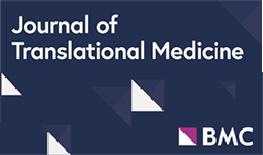External validation of the European risk assessment tool for chronic cardio-metabolic disorders in a Middle Eastern population
Authors
Affiliations
1Prevention of Metabolic Disorders Research Center, Research Institute for Endocrine Sciences, Shahid Beheshti University of Medical Sciences, Tehran, Iran.
2Tehran University of Medical Sciences, Tehran, Iran.
3Department of Biostatistics and Epidemiology, Research Institute for Endocrine Sciences, Shahid Beheshti University of Medical Sciences, Tehran, Iran.
4Endocrine Research Center, Research Institute for Endocrine Sciences, Shahid Beheshti University of Medical Sciences, Tehran, Iran.
5Prevention of Metabolic Disorders Research Center, Research Institute for Endocrine Sciences, Shahid Beheshti University of Medical Sciences, Tehran, Iran. fzhadaegh@endocrine.ac.ir.
Abstract
Background: High burden of chronic cardio-metabolic disorders including type 2 diabetes mellitus (T2DM), chronic kidney disease (CKD), and cardiovascular disease (CVD) have been reported in the Middle East and North Africa region. We aimed to externally validate a non-laboratory risk assessment tool for the prediction of the chronic cardio-metabolic disorders in the Iranian population.
Methods: The predictors included age, body mass index, waist circumference, use of antihypertensive medications, current smoking, and family history of cardiovascular disease and/or diabetes. For external validation of the model in the Tehran lipids and glucose study (TLGS), the Area under the curve (AUC) and the Hosmer-Lemeshow (HL) goodness of fit test were performed for discrimination and calibration, respectively.
Results: Among 1310 men and 1960 women aged 28-85 years, 29.5% and 47.4% experienced chronic cardio-metabolic disorders during the 6 and 9-year follow-up, respectively. The model showed acceptable discrimination, with an AUC of 0.72 (95% CI 0.69-0.75) for men and 0.73 (95% CI 0.71-0.76) for women. The calibration of the model was good for both genders (min HL P = 0.5). Considering separate outcomes, AUC was highest for CKD (0.76 (95% CI 0.72-0.79)) and lowest for T2DM (0.65 (95% CI 0.61-0.69)), in men. As for women, AUC was highest for CVD (0.82 (95% CI 0.78-0.86)) and lowest for T2DM (0.69 (95% CI 0.66-0.73)). The 9-year follow-up demonstrated almost similar performances compared to the 6-year follow-up. Using Cox regression in place of logistic multivariable analysis, model’s discrimination and calibration were reduced for prediction of chronic cardio-metabolic disorders; the issue which had more effect on the prediction of incident CKD among women. Moreover, adding data of educational levels and marital status did not improve, the discrimination and calibration in the enhanced model.
Conclusion: This model showed acceptable discrimination and good calibration for risk prediction of chronic cardio-metabolic disorders in short and long-term follow-up in the Iranian population.
Keywords: Cardiovascular disease; Chronic kidney disease; Diabetes mellitus, type 2; External validation; Risk assessment.

